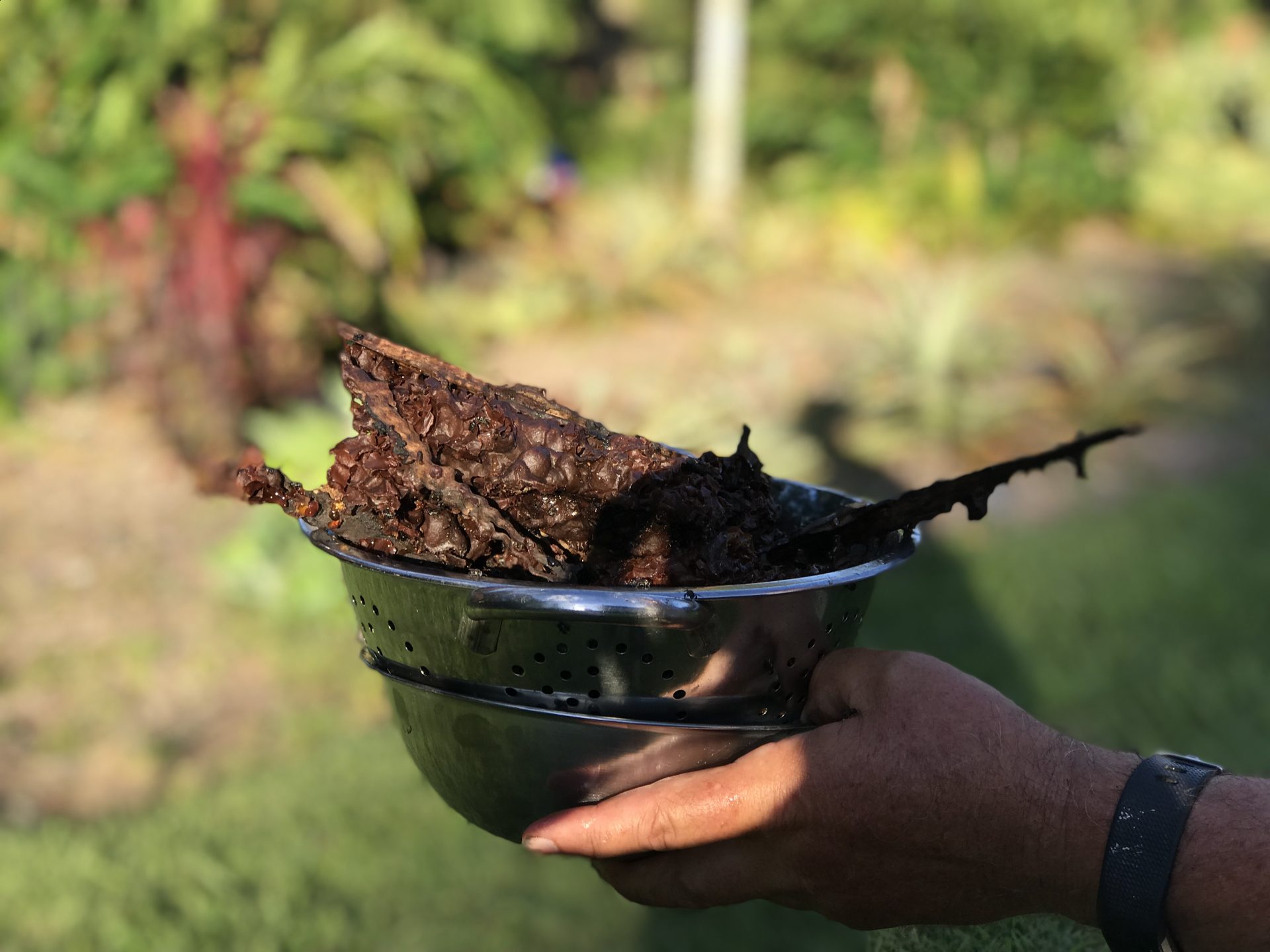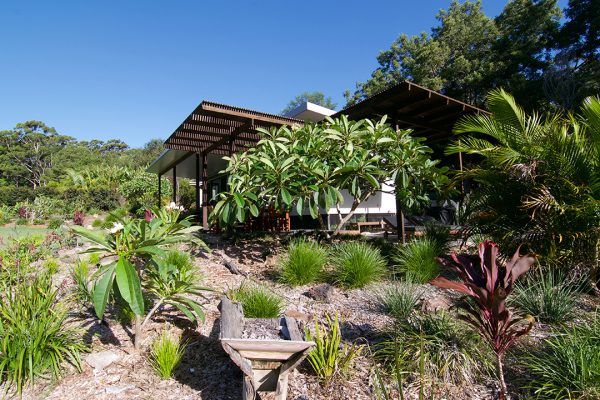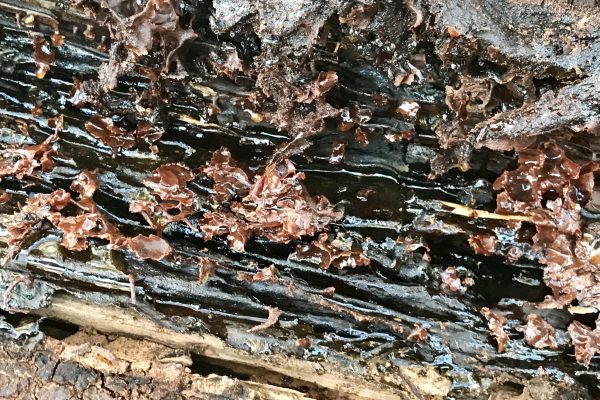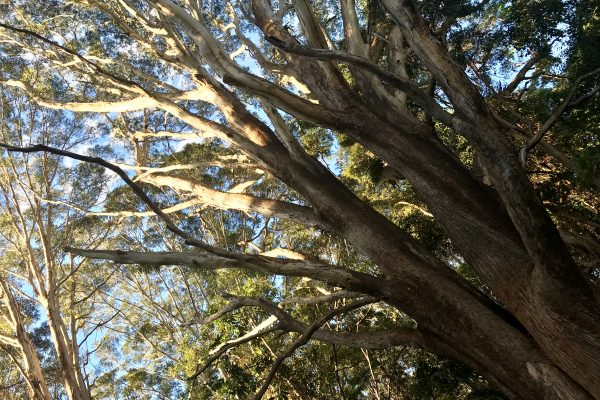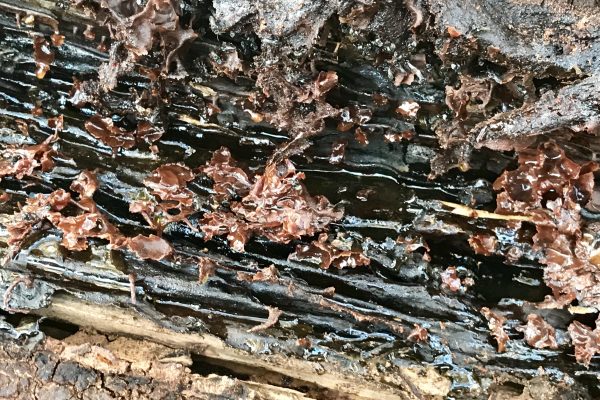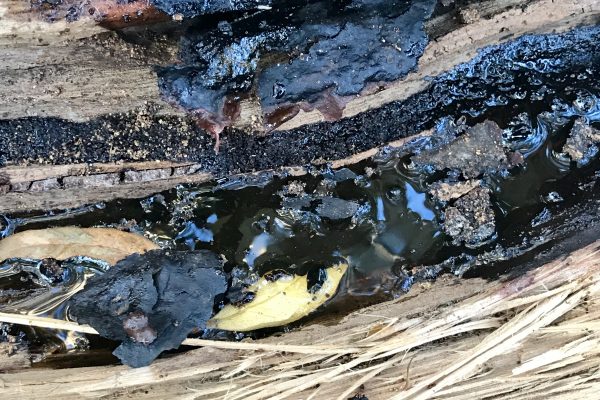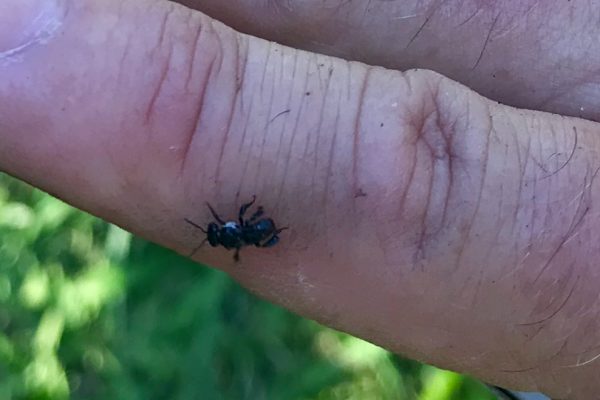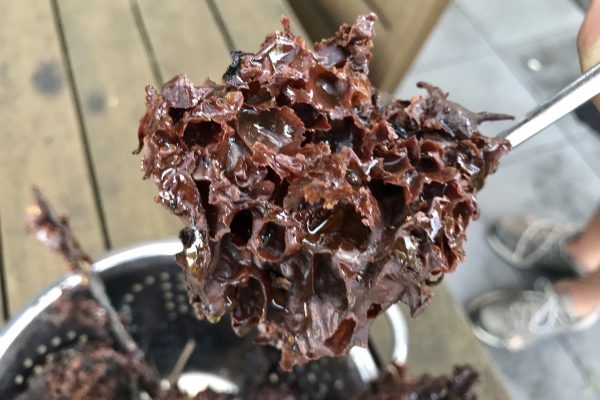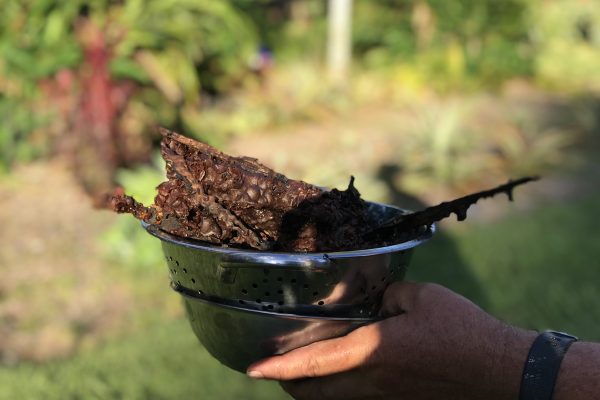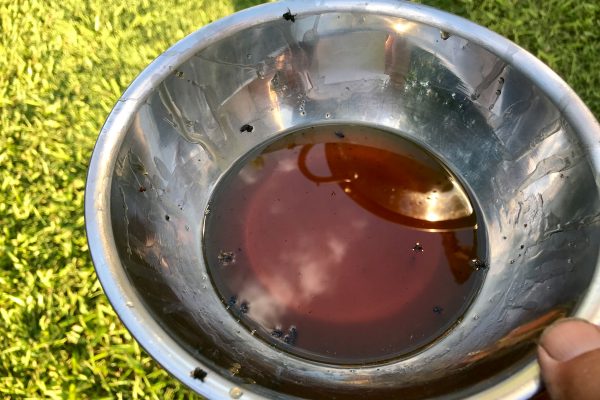Not far from The Lily Pad at Byron, we discovered liquid gold in a fallen log. Here’s how it unfolded…
We were excited to discover a native bee hive in a fallen log on the property, not too far from The Lily Pad. And what’s more, as we broke apart a section of the log, we struck gold! A pool of dark, runny native honey had collected in the hollow of the log, along with a gnarly clump of waxy honeycomb. It was nothing like we have ever seen before.
This video gives a close up look at the bees and the honey they miraculously produce. Take a look…
VIDEO CLIP – Discovery of a Native Bee Hive
The native bees are tiny black little things, not at all like traditional bees, and they don’t sting. We can attest to that, having had loads of them crawling over our hands and flying around the log.
We managed to collect a small jar of this precious liquid gold and dip our spoons in for a taste. Extraordinary! It’s very runny, very dark in colour and has quite a distinctive, strong sweet taste. We’ve read that it has antibacterial properties and prized by Aborigines.
About Native Bees
A fact sheet by ABC Gardening tells us we have about 2000 species of native bees in Australia. Only about 10 of these are social bees, with a queen, drones and workers, like traditional honey bees.
“These social native bees are stingless, and live in colonies of up to many 1000s in such places as hollow trees. They are 3 – 4 mm long and look like small flies. The stingless social bees are tropical bees and thrive in the northern states of Australia. Called ‘sugar bag’ by Aborigines, this honey has been prized by them for centuries as an extremely important source of carbohydrate and a medical remedy. The resinous material from which the nests are made was also collected and used as a glue for making tools, or for the mouthpieces of didgeridoos.”


